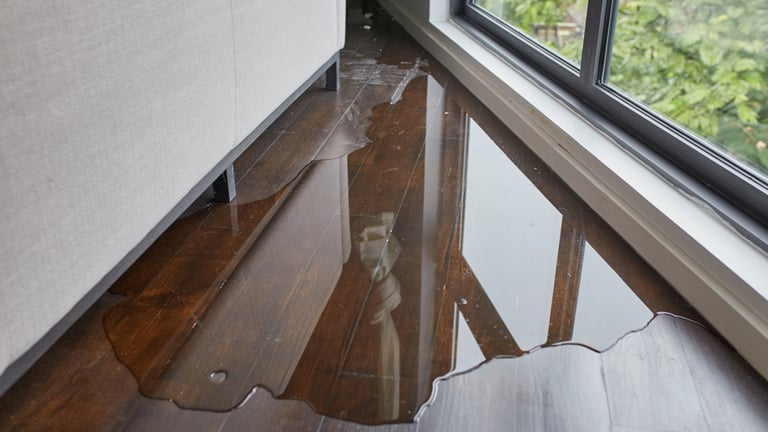Do's as well as Don'ts During Water Damages Emergency Situations.
Do's as well as Don'ts During Water Damages Emergency Situations.
Blog Article
We've unearthed the article about Preventing Fires and Water Damage In Your Home directly below on the web and felt it made good sense to talk about it with you over here.

Water gives life, water invasion on components where it's not intended to be can result in damage. It can peel off away surface areas and erode the foundation if the water soaks into your framework. Mold and mildew and also mold additionally grow in a damp environment, which can be hazardous for your health. Homes with water damage smell moldy and old.
Water can come from numerous sources such as tropical storms, floodings, burst pipelines, leakages, and sewage system problems. In case you experience water damage, it would certainly be great to know some safety and security precautions. Below are a few guidelines on exactly how to deal with water damages.
Do Prioritize Home Insurance Policy Protection
Water damages from flood because of heavy winds is seasonal. You can likewise experience an abrupt flood when a defective pipeline instantly bursts into your house. It would be best to have house insurance policy that covers both acts of God such as natural catastrophes, as well as emergency situations like busted plumbing.
Do Not Neglect to Switch Off Energies
In case of a calamity, specifically if you stay in a flood-prone area, it would certainly be a good idea to shut off the primary electric circuit. This removes power to your entire residence, stopping electric shocks when water comes in as it is a conductor. Furthermore, do not forget to turn off the major water line shutoff. When floodwaters are high, furnishings will move around and also cause damages. Having the main shutoff shut off protects against additional damages.
Do Keep Proactive and Heed Weather Condition Signals
Listen to discharge warnings if you live near a river, lake, or creek . Doing so reduces prospective residential or commercial property damages.
Don't Disregard the Roof
You can prevent rain damages if there are no holes and leaks in your roof. This will protect against water from streaming down your walls and saturating your ceiling.
Do Focus On Little Leaks
A ruptured pipe does not occur overnight. Generally, there are red flags that indicate you have damaged pipes in your home. As an example, you may notice gurgling paint, peeling off wallpaper, water streaks, water discolorations, or leaking audios behind the walls. Ultimately, this pipeline will certainly break. Preferably, you should not wait on points to escalate. Have your plumbing repaired prior to it causes huge damage.
Don't Panic in Case of a Burst Pipe
Keeping your presence of mind is important in a time of crisis. Due to the fact that it will certainly stifle you from acting fast, worrying will just compound the problem. When it involves water damages, timing is essential. The longer you wait, the more damages you can expect. Thus, if a pipe bursts in your house, right away shut off your major water valve to remove the source. After that unplug all electric outlets in the area or shut off the circuit breaker for that part of your home. Finally, call a trusted water damages restoration expert for aid.
Water gives life, water intrusion on parts where it's not supposed to be can result in damages. Residences with water damages odor moldy and old.
Water damage from flooding fees to hefty winds is seasonal. You may notice gurgling paint, peeling off wallpaper, water streaks, water stains, or trickling noises behind the walls. When it comes to water damages, timing is crucial.
Some Do's & Don't When Dealing with a Water Damage
DO:
Make sure the water source has been eliminated. Contact a plumber if needed. Turn off circuit breakers supplying electricity to wet areas and unplug any electronics that are on wet carpet or surfaces Remove small furniture items Remove as much excess water as possible by mopping or blotting; Use WHITE towels to blot wet carpeting Wipe water from wooden furniture after removing anything on it Remove and prop up wet upholstery cushions for even drying (check for any bleeding) Pin up curtains or furniture skirts if needed Place aluminum foil, saucers or wood blocks between furniture legs and wet carpet Turn on air conditioning for maximum drying in winter and open windows in the summer Open any drawers and cabinets affected for complete drying but do not force them open Remove any valuable art objects or paintings to a safe, dry place Open any suitcases or luggage that may have been affected to dry, preferably in sunlight Hang any fur or leather goods to dry at room temperature Punch small holes in sagging ceilings to relieve trapped water (don't forget to place pans beneath!); however, if the ceiling is sagging extremely low, stay out of the room and we'll take care of it DO NOT:
Leave wet fabrics in place; dry them as soon as possible Leave books, magazines or any other colored items on wet carpets or floor Use your household vacuum to remove water Use TV's or other electronics/appliances while standing on wet carpets or floors; especially not on wet concrete floors Turn on ceiling fixtures if the ceiling is wet Turn your heat up, unless instructed otherwise

We were made aware of that report on Preventing Fires and Water Damage In Your Home through an associate on a different domain. For those who enjoyed our blog entry plz don't forget to pass it around. Thank you so much for your time spent reading it.
Report this page